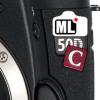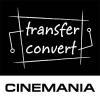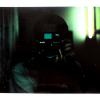Leaderboard
Popular Content
Showing content with the highest reputation on 04/22/2013 in all areas
-
Eagerly awaiting your Pocket Cinema Camera? You already have a micro for thirds camera and some C-mount lenses? Want to know if they will cover the sensor of the Pocket? Lets find out! I hope you will add your results, so we can make this list growing. I will only add lenses to the lists when you have proof, in other words: images. How? Because we know the active sensor area of the BMPCC measures 12,48 x 7,02 mm, it is fairly easy to check if our C-mount lenses will cover the full sensor. Calculate this by taking a picture with a lens on your micro four thirds camera, and crop out the image area of theBMPCC. In Photoshop: Open the image. Go to Edit > Image Size, uncheck resample image. Change Image width to 19 centimeters, press ok Go to Image > Canvas Size, change dimensions to 12,48 x 7,02cm, press OK to crop the image to BMPCC size. Resize to 1920x1080 pixels Post your results! Note: If you shoot on the GH3 or other MFT camera's, the sensor size is 17 x 13mm, so change the width in step 3 to 17 cm! To lazy to do it yourself or you can't work it out? Upload the full resolution files and I'll do it. List terms explained: Yes = covers the full sensor of the Blackmagic Pocket Cinema Camera No = doesn't cover the sensor Needs modification = Doesn't fit on C-mount to M43-adapter without modifications Equivalent = The focal length and depth equivalent on a fullframe camera (5D Mark III for example) Blackmagic Pocket Cinema Camera Compatibility list Primes Apollo 25mm f/0.85 - Yes = 72mm f/2.4 equivalent [link to proof] Angenieux 10mm f/1.8 Retrofocus (Fixed Focus) - Yes (dark corners) = 28,8mm f/5.2 equivalent [link to proof] [more info] Carl Zeiss Jena Tevidon 10mm f/2 - Yes - Needs modification = 28,8mm f/5.8 equivalent [link to proof] [more info] Carl Zeiss Jena Tevidon 35mm f/1.9 - Yes - Needs modification = 101mm f/5.6 equivalent [link to proof] Century 9mm f/1.8 - YES (poor quality) [link to proof] Computar 8mm f/1.3 - NO [link to proof] Computar 16mm f/1.4 - NO [link to proof] Computar TV Lens 25mm f/1.8 - YES = 72mm f/5,2 equivalent [link to proof] Cosmicar 8,5mm f/1.5 - NO [link to proof] Cosmicar 12.5mm f/1.8 - YES - Needs modification = 36mm f/5.2 equivalent [link to proof] Cosmicar 25mm f/1.8 - YES - 72mm f/5.2 equivalent [link to proof] Ernitec 6.5mm f/1.8 - YES (heavy distortion) [link to proof] Ernitec/Navitar 17mm f/0.95 - YES (v. blurry corners & distortion) [link to proof] Fujinon TV 12.5mm f/1.4 - Yes (blurry corners) - Mod.? (unknown) = 36mm f/4 equivalent [link to proof] Fujinon TV 16mm f/1.4 - NO [link to proof] Fujinon TV 35mm f/1.7 - YES - Needs modification = 101mm f/4.9 equivalent [link to proof] Leitz Macro Cinegon 10mm f/1.8 - Yes (dark corners) = 28,8mm f/5.2 equivalent [link to proof] Kern Switar 10mm f/1.6 - Yes (slight vignette & blurry corners) [link to proof] Nikon Cine Nikkor 13mm f/1.8 - Yes = 37,5mm f/5.2 [link to proof] Nikon Cine Nikkor 25mm f/1.8 - Yes = 72mm f/5.2 equivalent [link to proof] Pentax 25mm f/1.4 - YES - 72mm f/4 equivalent [link to proof] Schneider 10mm f/1.8 (silver version) - No (almost) [link to proof] Schneider-Kreuznach Cinegon 11.5mm f/1.9 - No (almost) = 33mm f/5.6 equivalent [link to proof] Schneider-Kreuznach Cine-Xenon 16mm f/2 - Yes = 46mm f/5.8 equivalent [link to proof] [link to proof (2)] Schneider-Kreuznach Xenon 25mm f/0.95 - Yes = 72mm f/2.7 equivalent [link to proof] Schneider Xenoplan 17mm f/1.7 - Yes (blurry corners) - [link to proof] SLR Magic 11mm F1.4 - Yes - [link to proof] (added by EOSHD) Tokina TV Lens 8mm f/1.3 - NO [link to proof] Tokina TV Lens 16mm f/1.6 - NO [link to proof] Taylor-Hobson Cooke Kinic 25mm f/1.3 - Yes = 72mm f/3.7 equivalent [link to proof] Taylor-Hobson 25mm f/1.9 - Yes - 72mm f/5.6 equivalent [link to proof] Wesley 25mm f/1.4 - YES = 72mm f/4 equivalent [link to proof] Wollensak Cine Raptar 12.5mm f/1.5 - Yes = 36mm f/4.3 equivalent [link to proof] Wollensak Cine Raptar 25mm f/1.9 - Yes = 72mm f/5.6 equivalent [link to proof] $ 25 noname 25mm f/1.2 CCTV - YES = 72mm f/3.5 equivalent [link to proof] Zooms Ernitec 6-12mm f/1.4 - NO [link to proof] Kowa TV Zoom 12.5-75mm f/1.8 - NO [link to proof]1 point
-

Sigma surprises with 18-35mm f/1.8 DC HSM Art
Sean Cunningham reacted to Julian for a topic
A 18-35mm zoom (for aps-c-sensors) with a constant aperture of f/1.8? Sounds unlikely, Sigma just did it! http://www.sigma-global.com/en/lenses/cas/product/art/a_18_35_18/features.html This will be sweet on a Nikon D5200/D7200 (or Canon aps-c-camera, if you insist :)) en the MFT Speed Booster arrives, it will be awesome on the GH3 and pretty cool on the BMPCC aswell... With the recent 35mm f/1.4 Art and 30mm f/1.4 DC Art Sigma showed great performance. Hope this 18-35mm f/1.8 lives up to it. Price? No idea. Not cheap... but the excellent Sigma 35mm f/1.4 Art is relatively cheap compared to the competition. I think €1000 would be a pretty good price for this zoom. Could be a bit more...1 point -
Polaroid 195 + fujifilm fp-3000b + Elmoscope II x2 anamorphic = [url=http://www.flickr.com/photos/shujimoriwaki/8670308147/][/url] [url=http://www.flickr.com/photos/shujimoriwaki/8670308147/]20130422[/url] by [url=http://www.flickr.com/people/shujimoriwaki/]Shuji Moriwaki[/url], on Flickr now i just gotta figure out how to nail focus...... hehe, being silly on a monday morning. cheers to tony wilson for entertaining my silly ideas.1 point
-
Anamorphic polaroid!
brucker reacted to tony wilson for a topic
the guy in the foto needs a doctor his face is all soft and his skull needs adjusting. i think it is called cranial sacrel therapy. is he a famous comic actor in your town :)1 point -

Could Nikon be about to enter digital cinema market?
shijan reacted to Andrew Reid for a topic
Here's a more technical description of the new sensor http://www.vlsisymposium.org/circuits/program.html#pro03 A 1-inch Optical Format, 14.2M-Pixel, 80fps CMOS Image Sensor with a Pipelined Pixel Reset and Readout Operation, H. Honda*, S. Osawa*, M. Shoda*, E. Pages*, T. Sato*, N. Karasawa*, B. Leichner**, J. Schoper**, E.S. Gattuso**, D. Pates**, J. Brooks**, S. Johnson**and I. Takayanagi*, *Aptina Japan and **Aptina Imaging, Japan A 1-inch optical format, 14.2M-pixel, 80fps, digital-output CMOS image sensor that employs a row-shared dual conversion gain pixel is presented. To achieve the 80fps readout rate, a pipelined pixel reset/readout scheme named "nesting scan" has been introduced, where the charge sense node inside a pixel is reset during the previous row. Readout noise and maximum handling signal charge of the sensor are 1.7e-rms and 16ke-, respectively, and the ratio of column FPN to readout noise is lower than 0.03 in all gain conditions. ----- Also note Panasonic are developing an organic sensor with a similar effect on colour as an OLED panel has on an LCD display. An Ultra-Low Noise Photoconductive Film Image Sensor with a High-Speed Column Feedback Amplifier Noise Canceller,M. Ishii, S. Kasuga, K. Yazawa, Y. Sakata, T. Okino, Y. Sato, J. Hirase, Y. Hirose, T. Tamaki, Y. Matsunaga and Y. Kato, Panasonic Corporation, Japan We developed an ultra-low noise image sensor in which an organic photoconductive film (OPF) is laminated on the entire surface of the pixel circuits. In order to suppress the kTC noise in the pixel circuit of a three transistor configuration, a high-speed column feedback noise cancel circuit is newly developed. An ultra-low noise of 2.9 electrons during the horizontalblanking period of only 5 μs has been achieved.1 point -

Widest lens for Pocket Blackmagic camera Bolex anamorphot?
Tito Ferradans reacted to JohnBarlow for a topic
16/32 means it has rear aperture of 32mm and was intended for 16mm film 8/19 means it has rear aperture of 19mm and was intended for 8mm film both are 1.5x and made by Moeller but some say the Bolex ones are higher quality (unproven) there are 2x models also like 30/2x and 32/2x as well as the bigger cinema projection lenses1 point -

Confused about Frame Rate rules versus Light rules
NikolaOvcharski reacted to powderbanks for a topic
Frame rate has no relation to exposure or light. Frame rate is how many individual pictures are being exposed/projected per second. Shutter speed is how long the shutter stays open, in seconds. The only thing you need to know about shutter angle is that it effects motion blur between frames. B: The light 'trio' of aperture, shutter speed and ISO is really for digital stills. For video, only consider ISO and aperture for controlling your exposure. Since DSLR's don't have a global shutter and you can't control the shutter angle, the only way you can control that is by your shutter speed (hence the 'inverse of twice the frame rate'). White balance really doesn't have anything to do with exposure. To a degree it does, but it is the temperature of the color white. Higher numbers give you a warmer (yellow/orange) white, lower numbers cooler (blue) white. 2. It depends on the situation, but I usually set the aperture first then use the lowest ISO I can and still retain proper exposure. I shoot at 1/40 shutter speed, you get a little bit more motion blur, but it's barely noticeable compared to 1/50 (for 24fps. I shoot 1/125 for 60fps). Don't even think of shutter speed in terms of a way to adjust your exposure. Leave it at whatever it is for the given frame rate (1/40 or 1/50 for 24/25fps or 1/100 or 1/125 for 50/60fps) and don't change it; unless you intentionally want to manipulate the motion blur. See below. 3. If you make your shutter speed faster, you'll lose more motion blur between frames, and motion starts to look artificial/strange. But if that's what you're going for, do it. If you slow it down (the GH2 can only go down to 1/30, I think, in 24fps) then you'll have the opposite. You can get down to 1/2 second shutter speed in Manual Movie Mode with the GH2, but IMO, it's only good for time lapse stuff. So really, there is no rule of thumb, aside from the 180 degree shutter concept for 'natural' motion blur. The challenge of shooting 1/40 or 1/50 shutter speed is that it is a rather slow shutter speed. In bright, outdoor situations, to retain shallow depth of field, you'll need to use an ND filter. You can get sets or a variable one.1 point -
SSD's cost around 150 euros and upwards for 250 GB, over 300 euros for 500 GB sizes. SSD's are the most rugged ones for sure. Hard disks are far more sensitive to rough handling and shocks than SSD's. However, they are the most sensitive when they are powered on. If you eject hard disks safely before powering off - hard disks park their mechanical parts (arms with read/write heads). When in parked state, hard disks can withstand quite a lot of shocks and rough handling. So, if you want lots of storage for a cheap price, hard disks are the way to go. If you want the absolutely best ruggedness but can survive on a bit smaller storage, SSD's will be the best choice. Depending on where you travel, you want to keep both SSD's and HDD's dry. In jungle-like humidity you really would want to have some kind of sealed box/bag with something that absorbs humidity, like silica gel. I've seen how bags get treated at airports, and would it be me, I'd be sure to keep the portable disk as hand luggage, wrapped in a sweater or so. Normal carrying like that in a backpack or so shouldn't be a problem if you aren't unusually careless about the bag. When it comes to the casings of the hard disks, I wouldn't care too much about if it is padded or not, that's mainly cosmetic. What I'd care more about would be the cooling properties of the hard disk case. According to largescale tests done by larger data centers, hard disks have the least amount of failure if they run at around 30-40 degrees celcius. Cooler or warmer running increases risks for failure. My personal recommendation for traveling storage on the cheap would be to get two portable hard disks, one for backup, then using same transporting & dry keeping for both of the disks. If they'd get banged around enough to break - you got a good chance that one of the disks survive at least. Hard disks are the same all around the world as well, so you'd easily be able to get a replacement for backup if one would break down. Also, any portable hard disk that has the right interface for your mac (USB/Firewire) will work, no real difference. My own solution is to get any cheap metal (better for keeping drives running cool) casing I can find for the interface I need (usb/firewire/esata), and then I drop in just a normal 3.5" hard disk. No reason for you to do it if you need a new case, I just do so because I usually have a lot of extra hard disks lying around.1 point


